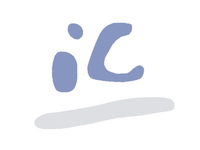Conferencia: "Medical applications of microwaves"
 1
/
1
1
/
1

Impartida por la Profa. Zoya Popovic y organizada por el Departamento de Ingeniería de Comunicaciones
Día: miércoles 14 de noviembre de 2018
Hora: 12:30
Lugar: Sala de Grados A - E.T.S. Ingeniería de Telecomunicación
Resumen:
Esta conferencia versará sobre el uso de las técnicas de microondas para dos aplicaciones diferentes: diseño de excitadores para sistemas de imágenes médicas basados en la resonancia magnética (MRI) y el uso del campo cercano para medidas no invasivas de la temperatura en el interior del cuerpo humano.
Abstract:
This talk will first present a brief overview of the activities in the microwave group at the University of Colorado, Boulder, following a discussion on two topics that use microwave techniques for medical applications: (1) design of exciters and bore for human-sized 10.5-T MRI machines; and (2) a study of near-field radiometry for internal temperature measurements of the human body. The focus of the first topic is design of cavity and probes for improving uniformity of the circularly-polarized B-field inside phantoms for high-field travelling-wave MRI imagers. The phenomenology of high-field imaging and its resulting challenges will be highlighted, followed by simulation and experimental data using a research Siemens instrument. Although MRI can be used for measuring internal body temperature, it is expensive, large and slow. Radiometry is shown to be a feasible method for implementing a portable or even wearable microwave thermometer. One of the possible frequencies of operation is the 1.4 GHz quiet band, which is appropriate for centimeter penetration into tissues with minimized radiofrequency interference (RFI). The total blackbody power from a tissue stack is received by a probe placed on the skin, designed to receive a high percentage of the total power from a buried tissue layer. Temperature retrieval for sub-surface tissue layers is performed using near-field weighting functions, obtained by full-wave simulations with known tissue complex electrical parameters. Measurements are presented using a calibrated Dicke radiometer at 1.4GHz for various phantom tissues. It is shown that temperature can be tracked within a fraction of a degree for a phantom muscle tissue layer under phantom fat and skin layers.
Biography:
Zoya Popovic is a Distinguished Professor and the Lockheed Martin Endowed Chair of Electrical Engineering at the University of Colorado. She obtained her Dipl.Ing. degree at the University of Belgrade, Serbia, and her Ph.D. at Caltech. In 2001/03 and 2014, she was a Visiting Professor with the Technical University of Munich, Germany and ISAE in Toulouse, France, respectively. She has graduated 58 PhDs and currently advises 14 doctoral students in various areas of microwave engineering. She is a Fellow of the IEEE and the recipient of two IEEE MTT Microwave Prizes for best journal papers, the White House NSF Presidential Faculty Fellow award, the URSI Issac Koga Gold Medal, the ASEE/HP Terman Medal and the German Humboldt Research Award. She was named IEEE MTT Distinguished Educator in 2013 and the University of Colorado Distinguished Research Lecturer in 2015. She has a husband physicist and three daughters who can all solder. She is currently at Carlos III University in Madrid where she holds a Chair of Excellence in 2018/2019.
> Cartel






